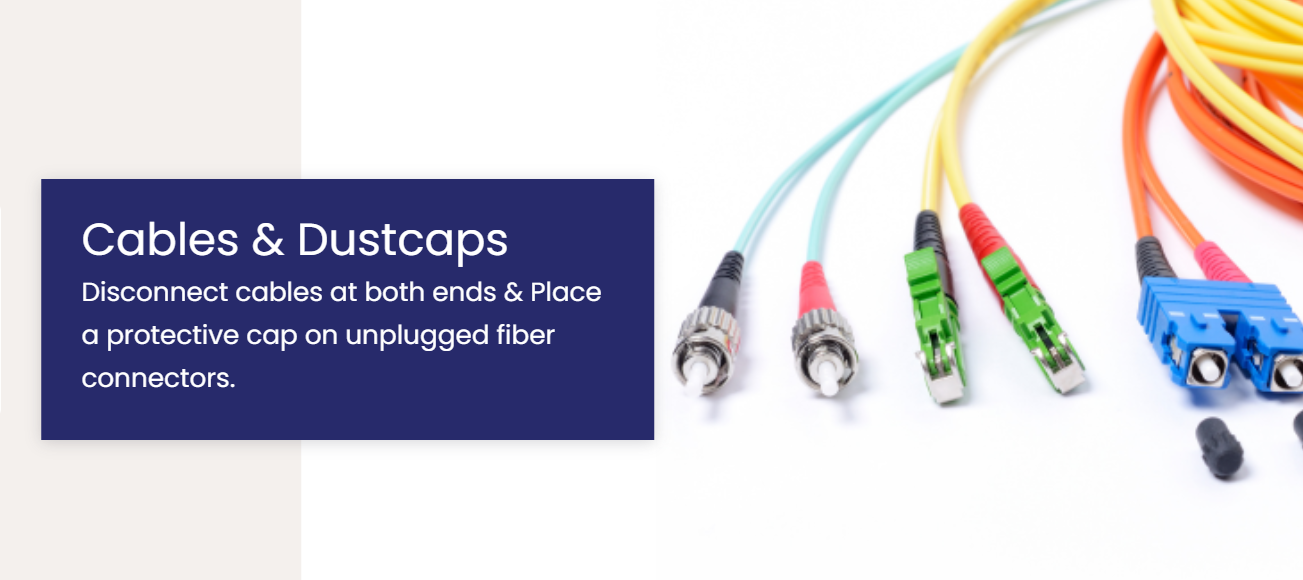The Importance
Of Ultrasonic Cleaning

Since its development in the 1970s, fiber optic communication has revolutionized the way information is sent and received. The method is achieved by transmitting pulses of light down an optical fiber, which then forms a carrier waveform that is modulated to send a signal.
Due to the narrow diameter of the fiber, fiber optic connectors must be cleaned in order to remain effective. A contaminated fiber connection may eventually cause failure of the component, and in some cases, the entire system. Even common microscopic debris such as dirt or dust can block optical signals from being transmitted. Additionally, certain particles can damage the glass surface, creating unnecessary downtime and costly servicing.
Common Debris Found on Connectors
●Dust and Dirt: Dirt and dust are common contaminants found on connectors. Virtually unavoidable, dirt and dust can be can be spread airborne or by human touch.
●Oil: Oil is often found on connectors as a result of contact with human skin. Human skin produces naturally occurring oils that will contaminate the connector if gloves are not worn. Additionally, if lubricants such as WD-40 are used, it will also cause contamination.
●Metallic Flakes: Fibers and connectors are often housed in plated metals. Even under normal usage, the plated metal may shed particles that can affect the connector. Furthermore, if the connector was wiped with a dry cloth, this will charge the connector, making it a magnet for the metal flakes.
Why Fiber Optic Connectors Need to Be Cleaned

The sensitive nature of optical fibers requires accuracy and a structured system to be in place when it’s cleaned. Operators should always inspect the fiber optic connectors before beginning the cleaning process.
Cleaning Fiber Optics:
Always Inspect
Reminders about inspection:
There are several options of cleaning fiber optics, including using lint free cotton swaps or compressed gas. However, when precision is required ultrasonic sonic cleaning has been the preferred method to wet-clean fiber optics. Advantageous for connectors in a fixed or in-house location, ultrasonic cleaning quickly and efficiently eliminates contaminates.
Combined with a cleaning solution (usually isopropyl alcohol), fiber optic connectors are placed into the ultrasonic cleaner’s chamber along with its sleeve. The cleaner then uses a high ultrasound frequency to target dirt, oils, metallic particles, and other contaminates. The dirt and grime is then removed from the connectors and components without any damage or further contamination being done to them.
Safe and cost-effective, many ultrasonic cleaners feature audible built-in timers and adjustable cleaning intensity levels, as well as temperature adjustment options.
Ultrasonic Cleaning: The Preferred Method
Below we’ve included a few general instructions on how to clean optical fibers using an ultrasonic cleaner. Depending on your specific connector, please be aware that not all instructions will be applicable.
1. Place connector under running water.
2. Rinse connector until it is clear of debris.
3. If your connector has removable parts or a sleeve, remove them based on the manufacturer’s directions.
4. Place connector and removed parts in the ultrasonic cleaner’s chamber.
5. Fill the chamber with the appropriate amount of solution.
6. Set the timer for the cleaner based on your connector type. This will generally be around one minute.
7. After the ultrasonic cleaning has been completed, dry the connector and its part with canned air.
8. Reassemble the connector and its components based on manufacturer’s directions.
9. As a final step, uses a fiberscope to inspect the connector for cleanliness before plugging it back it.
Ultrasonic Cleaning: General Steps
Before beginning a cleaning process, check with your connector manufacturer’s guidelines. Many manufacturers have their own guidelines and recommendations for properly cleaning their connectors. It is important that these guidelines be followed for the connector to be properly cleaned without any risk of damage.
Never allow isopropyl alcohol to evaporate off the connector. Evaporated alcohol will leave residue on the connector which will require another session in the white cleaner. The alcohol may also seep into the crevices of the ferrule and damage the system upon reconnection.
It is generally not recommended to place bulkheads or receptacles in your ultrasonic cleaner. Please refer to your manufacturer’s instructions.
Ultrasonic Cleaning: Best Practices
Reminders about inspection:
As companies continue to expand their fiber optic networks, it’s important that system personnel members learn how to maintain fiber optic connectors for optimum long term usage. When used properly, ultrasonic cleaners are an effective way to keep connectors free of dust, oils, and metallic particles, while remaining cost effective and user friendly. Designed to clean optical fibers and components of a variety of sizes, an ultrasonic cleaner will easily accommodate your cleaning needs.




